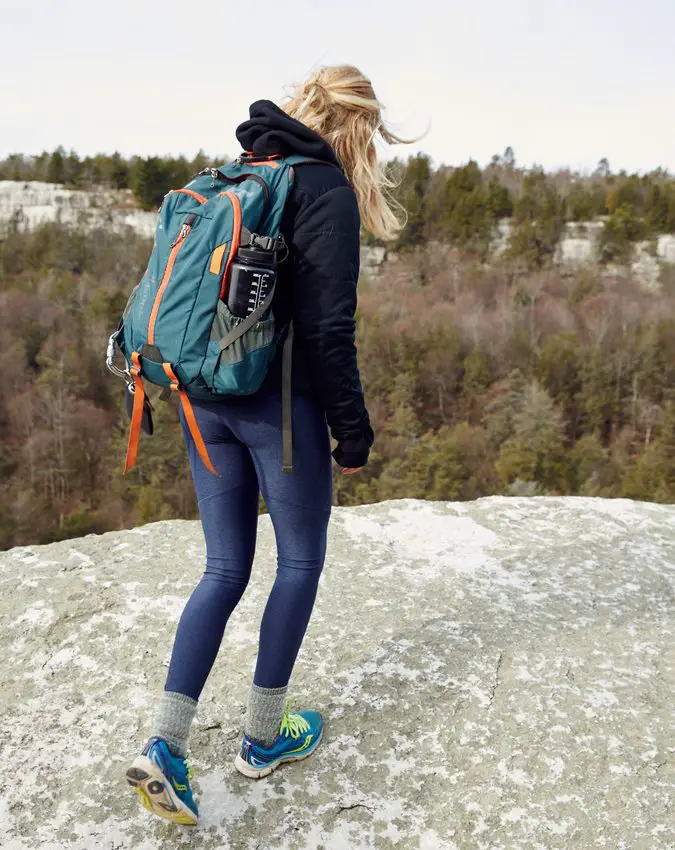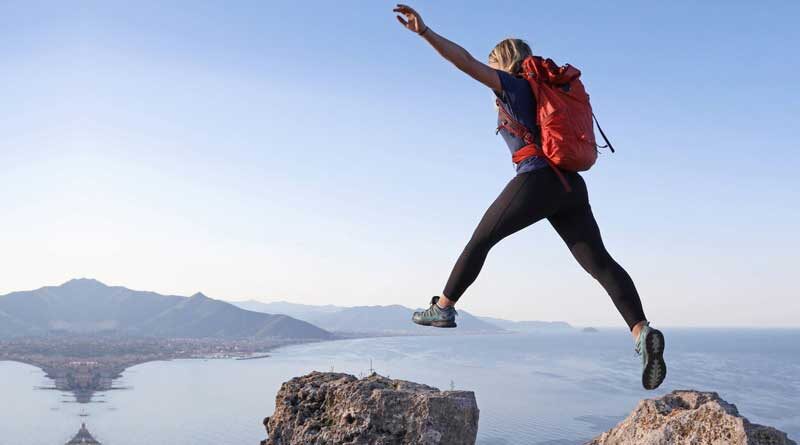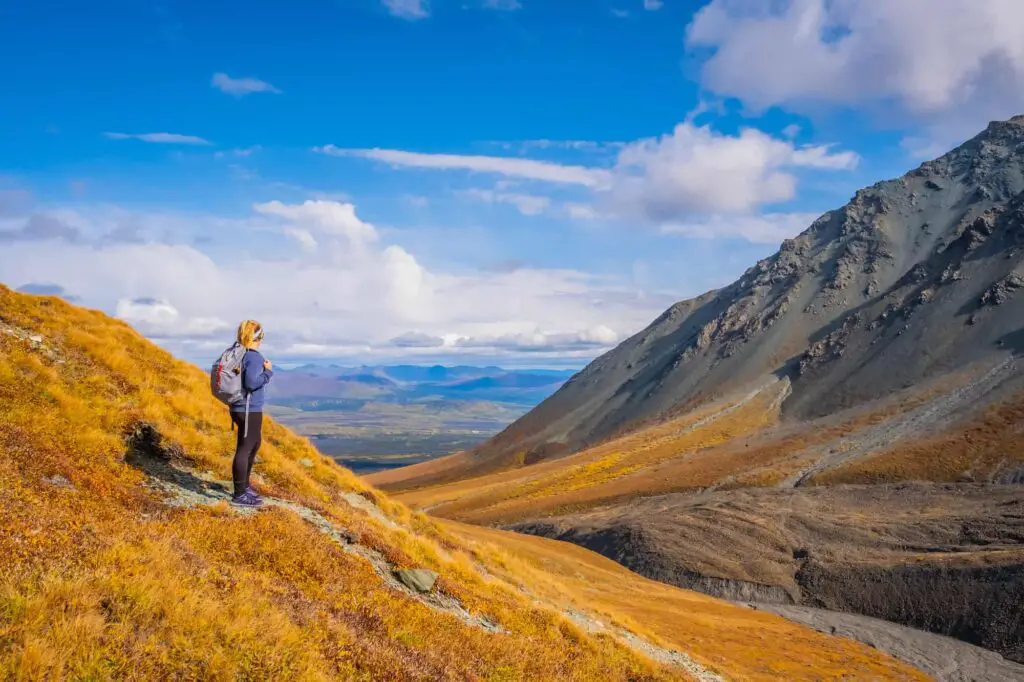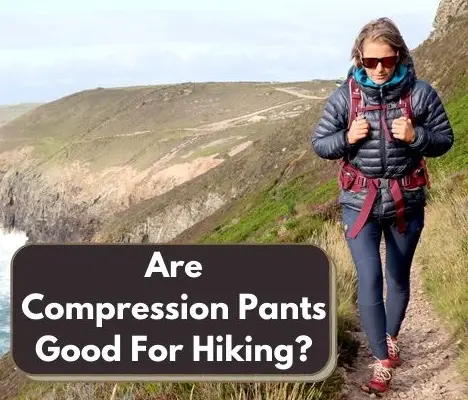As hiking becomes more popular there are more options than ever in terms of gear and clothing options, and compression clothing for hiking has been rising in popularity. Many of our readers want to know: are compression pants good for hiking?
Compression pants are good for hiking due to their ability to reduce muscle strain, muscle fatigue, and skin chafing while on the trail, and their ability to reduce muscle soreness and improve muscle recovery after hiking.

What Are Compression Pants For Hiking?
Compression pants are tight-fitting and compressive forms of clothing that are often made out of nylon and elastin that are designed to enhance performance and recovery.
Compression pants are built upon the concept that the quicker the blood flows through your body, the better your circulatory system functions, getting more oxygen to your cells.
Blood circulation is aided by compression pants which then aids recovery and performance because your cells are getting more oxygen and are functioning better because of it.
Why Are Compression Pants Good For Hiking?
Compression Pants Reduce Muscle Fatigue When Hiking
Hiking is a strenuous activity, and all that hiking up and down hills and over rocky terrain can leave your muscles fatigued at the end of the trail.
Compression pants improve the blood flow in your legs, getting more oxygen to your muscles which leads to a reduction in muscle fatigue and giving you more fuel in your tank to enjoy your hike to the fullest.
Hiking In Compression Pants Lowers Your Chances Of Injury
Although range of motion is important, compression pants work kind of like a rubber band on your range of motion – you can extend further than most traditional hiking pants will allow, but compression pants won’t allow you to extend yourself for long.
This is important because compression pants help keep you from “overdoing it”, reducing your chance of muscle strains.
Compression Pants Prevent Skin Chafing While Hiking
Hiking in loose pants can cause chafing due to the material bunching up and rubbing against the skin on your legs causing skin irritation and chafing.
Compression pants hug your legs tightly and don’t move around as you hike, preventing skin chafing, rashes, and irritation.
Hiking In Compression Pants Helps Retain Body Heat
Compression pants stay close to your body, retaining your natural body heat and keeping you warm as you hike.
Compression Pants Are Breathable And Moisture-Wicking
Let’s face it: as you hike in any weather, you’re going to sweat.
Luckily, compression pants siphon sweat and moisture away from your body to keep your skin dry and free from irritation out on the trail.
Most Compression Pants Are Durable And Lightweight
Compression pants are thick enough to offer strong hold and elasticity, but not so thick that they’re going to weigh you down like traditional hiking pants.
This thickness also allows them some resistance against abrasions or tears compared to thinner bottoms like leggings.
Compression Pants Offer Greater Freedom Of Movement Versus Traditional Hiking Pants
Traditional hiking pants simply don’t offer the same stretch and range of motion that compression pants can.
Having this extra range of motion can allow you to move more freely on the trail or over obstacles as needed, which is a big plus.

Why You Should Wear Compression Pants After Hiking
Compression Pants Improve Muscle Recovery After Hiking
Hiking all day can wear anyone out, and after hiking all day your muscles could be inflamed from fluid and white blood cells working their way into the muscles due to your activity.
Compression pants restrict the amount of fluid entering your muscles which reduces inflammation and swelling, improving your recovery time.
Compression Pants Reduce Muscle Soreness From Hiking
Almost everyone experiences muscle soreness from hiking, which is caused by lactic acid buildup in the muscles.
Since compression pants constrict the muscles, there is less room for lactic acid to build up in the muscle groups, resulting in less muscle soreness.

Choosing Compression Pants For Hiking – What To Look For
Not all compression pants are created equal! There are a few considerations to keep in mind as you begin your search.
Know Your Compression Pants Materials
Elastane (aka Lycra Or Spandex)
Elastane gives fabric the ability to stretch, so the higher percentage of elastane will equate to additional “give” or stretchability in the fabric.
Polyester
Polyester is a highly breathable and moisture-wicking material, making it great for hiking pants. It’s slightly less durable than nylon.
Nylon
Nylon is more durable than polyester, but is less breathable.
Polyamide
Polyamide is the least breathable of all fabrics listed here, but it’s great at water resistance and retains heat well, making it a great choice for compression hiking pants you’ll primarily wear in winter.
Merino Wool
Merino wool is a little more costly than the other fabrics here, but it more than makes up for it by being extremely soft, moisture wicking, breathable, and naturally odor-resistant.
Make Sure Your Compression Pants Are Breathable And Moisture-Wicking
Sweat on your skin is problematic because it’s both uncomfortable and can also lead to your body becoming cold if your pants are holding in moisture and the air outside is cool.
Most compression pants for hiking are both breathable and moisture-wicking, keeping sweat off your skin and moving moisture to the surface so it can dry faster- keeping you warm, comfortable, and safe.
Get Compression Hiking Pants That Offer The Right Fit And Comfort
Waistband
Opt for compression hiking pants with a smooth and flat profile- they’re more comfortable.
Rise
The rise is simply the distance from the waistband to the crotch seam of any pair of pants.
Compression pants may be offered in low-rise, mid-rise, and high-rise variants.
High-rise pants offer better torso support and coverage and will provide extra protection in cold weather and prevent irritation of your skin from things like a backpack rubbing against it as you hike.
Low-rise and mid-rise pants are usually better for warmer weather because they keep fabric off your torso, allowing you to stay cooler.
Flat-Sewn Seams
Considering that compression pants fit your skin tightly, flat-sewn seams will keep the seams from digging into your skin or chafing while you hike.
Make Sure Your Hiking Compression Pants Meet Your Mobility Needs
Articulated Knees
Articulated knees simply mean that the fabric already conforms to the natural shape of your knees and legs, providing a greater range of motion while active and keeping your pants from bunching up behind your knees.
Gusseted Crotch
Pants with a gusseted crotch feature a diamond-shaped section that connects the two pants legs near the groin.
Gusseting allows unrestricted movement while hiking and doing other activities, which is a plus.
Pockets And Storage
Some hiking compression pants offer pockets in the waistband or thigh area for storage of small essential items, which is a nice convenience.
Although you’ll keep most items in your hiking daypack, it can be wonderful to be able to keep your phone or GPS in your pants pocket.
Sun Protection
Some hiking clothing comes with a UPF rating (short for ultraviolet protection factor).
The higher the UPF rating, the better it protects your skin from the sun’s harmful rays.
Consider clothing with a higher UPF rating if you’ll be doing lots of hiking in sunny weather (who doesn’t love to hike when it’s nice out?).
Water Resistance
While most compression pants aren’t as water-resistant as old-school hiking pants, some are treated with a durable water repellent (aka DWR) to increase their water resistant properties.
This helps water bead on the surface rather than soaking into your pants.
Consider water resistance if you’ll be hiking in rainy weather or snow with any regularity.
Durability
Some hiking compression pants feature extra sections of fabric for reinforcement to protect against scrapes and abrasions like on your knees or the seat of the pants.
This increases the longevity, use, and value you’ll see from your hiking gear.
FAQs About Compression Pants For Hiking
It’s recommended to wear compression pants only for about 3 hours at a time, especially if you’re not up and moving (like on a long hike).
If you’re sedentary and wearing compression pants all day it can cause blood clots, so steer clear of just lounging around in compression pants.
Wrapping Up: Are Compression Pants Good For Hiking?
As we’ve reviewed, compression pants are a great choice for hiking due to their ability to reduce muscle strain, skin chafing, and muscle fatigue on the trail, and are also great afterwards thanks to their abilities to reduce muscle soreness and recovery-quickening properties.
Tell us what you think in the comments below about whether or not compression pants are good for hiking, along with your favorite pair.
If you’re looking to hike this fall, check out our guide, what to wear hiking in fall for some great suggestions to get fully ready for the season.

